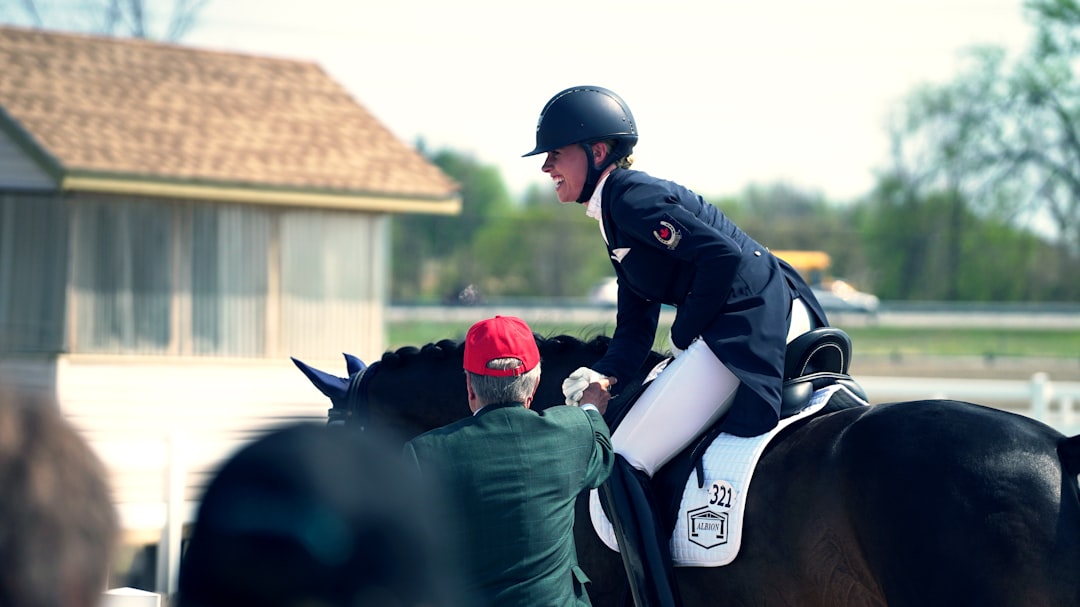What is it about?
The connection between bone shape and bone adaptive responses is likely to be useful in forecasting the response of long bones to a training program as well as predicting their internal loading. A variety of geometrical parameters (shape indices) in cross sections (slices) within the diaphysis of equine MC3 bones was measured. These values were then compared to assess their significant changes employing ANOVA and t-tests.
Featured Image

Photo by Nino Liverani on Unsplash
Why is it important?
Insight into the changes of the studied geometrical parameters will assist in determining the effects of maturation and exercise history on bone modelling around the midshaft of long bones. They also provide invaluable input parameters to conduct reliable artificial neural network analyses.
Perspectives
Substantial effort and considerable time were put into collecting the raw data associated with this study. 27 Thoroughbred horses aged from 12 hours to 15 years were used to collect, measure, and finally analyze the data. ANOVA tests and t-tests were performed in a methodical manner to assess the significant changes among the geometrical variables and to address the observation of significant differences occurred among five groups (foals, yearlings, two-year-olds, three-year-olds, and adults). Suggestions were offered on the shape optimization of foal samples. Insight into the changes of the studied geometrical parameters will assist in determining the effects of maturation and exercise history on bone modelling around the midshaft of the MC3.
Saeed MOuloodi
University of Melbourne
Read the Original
This page is a summary of: Converging-diverging shape configuration of the diaphysis of equine third metacarpal bone through computer-aided design, Comparative Exercise Physiology, December 2019, Wageningen Academic Publishers,
DOI: 10.3920/cep190010.
You can read the full text:
Resources
Prediction of displacement in the equine third metacarpal bone using a neural network prediction algorithm
Bone is a nonlinear, inhomogeneous and anisotropic material. To predict the behavior of bones expert systems are employed to reduce the computational cost and to enhance the accuracy of simulations. In this study, an artificial neural network (ANN) was used for the prediction of displacement in long bones followed by ex-vivo experiments. Three hydrated third metacarpal bones (MC3) from 3 thoroughbred horses were used in the experiments. A set of strain gauges were distributed around the midshaft of the bones. These bones were then loaded in compression in an MTS machine. The recordings of strains, load, Load exposure time, and displacement were used as ANN input parameters. The ANN which was trained using 3,250 experimental data points from two bones predicted the displacement of the third bone (R2 ≥ 0.98). It was suggested that the ANN should be trained using noisy data points. The proposed modification in the training algorithm makes the ANN very robust against noisy inputs measurements. The performance of the ANN was evaluated in response to changes in the number of input data points and then by assuming a lack of strain data. A finite element analysis (FEA) was conducted to replicate one cycle of force-displacement experimental data (to gain the same accuracy produced by the ANN). The comparison of FEA and ANN displacement predictions indicates that the ANN produced a satisfactory outcome within a couple of seconds, while FEA required more than 160 times as long to solve the same model (CPU time: 5 h and 30 min).
Accuracy Quantification of the Reverse Engineering and High-Order Finite Element Analysis of Equine MC3 Forelimb
Shape is a key factor in influencing mechanical responses of bones. Considered to be smart viscoelastic and inhomogeneous materials, bones are stimulated to change shape (model and remodel) when they experience changes in the compressive strain distribution. Using reverse engineering techniques via computer-aided design (CAD) is crucial to create a virtual environment to investigate the significance of shape in biomechanical engineering. Nonetheless, data are lacking to quantify the accuracy of generated models and to address errors in finite element analysis (FEA). In the present study, reverse engineering through extrapolating cross-sectional slices was used to reconstruct the diaphysis of 15 equine third metacarpal bones (MC3). The reconstructed geometry was aligned with, and compared against, computed tomography–based models (reference models) of these bones and then the error map of the generated surfaces was plotted. The minimum error of reconstructed geometry was found to be +0.135 mm and -0.185 mm (0.407 mm ± 0.235, P > .05 and −0.563 mm ± 0.369, P > .05 for outside [convex] and inside [concave] surface position, respectively). Minor reconstructed surface error was observed on the dorsal cortex (0.216 mm ± 0.07, P > .05) for the outside surface and −0.185 mm ± 0.13, P > .05 for the inside surface. In addition, a displacement-based error estimation was used on 10 MC3 to identify poorly shaped elements in FEA, and the relations of finite element convergence analysis were used to present a framework for minimizing stress and strain errors in FEA. Finite element analysis errors of 3%–5% provided in the literature are unfortunate. Our proposed model, which presents an accurate FEA (error of 0.12%) in the smallest number of iterations possible, will assist future investigators to maximize FEA accuracy without the current runtime penalty.
Contributors
The following have contributed to this page










